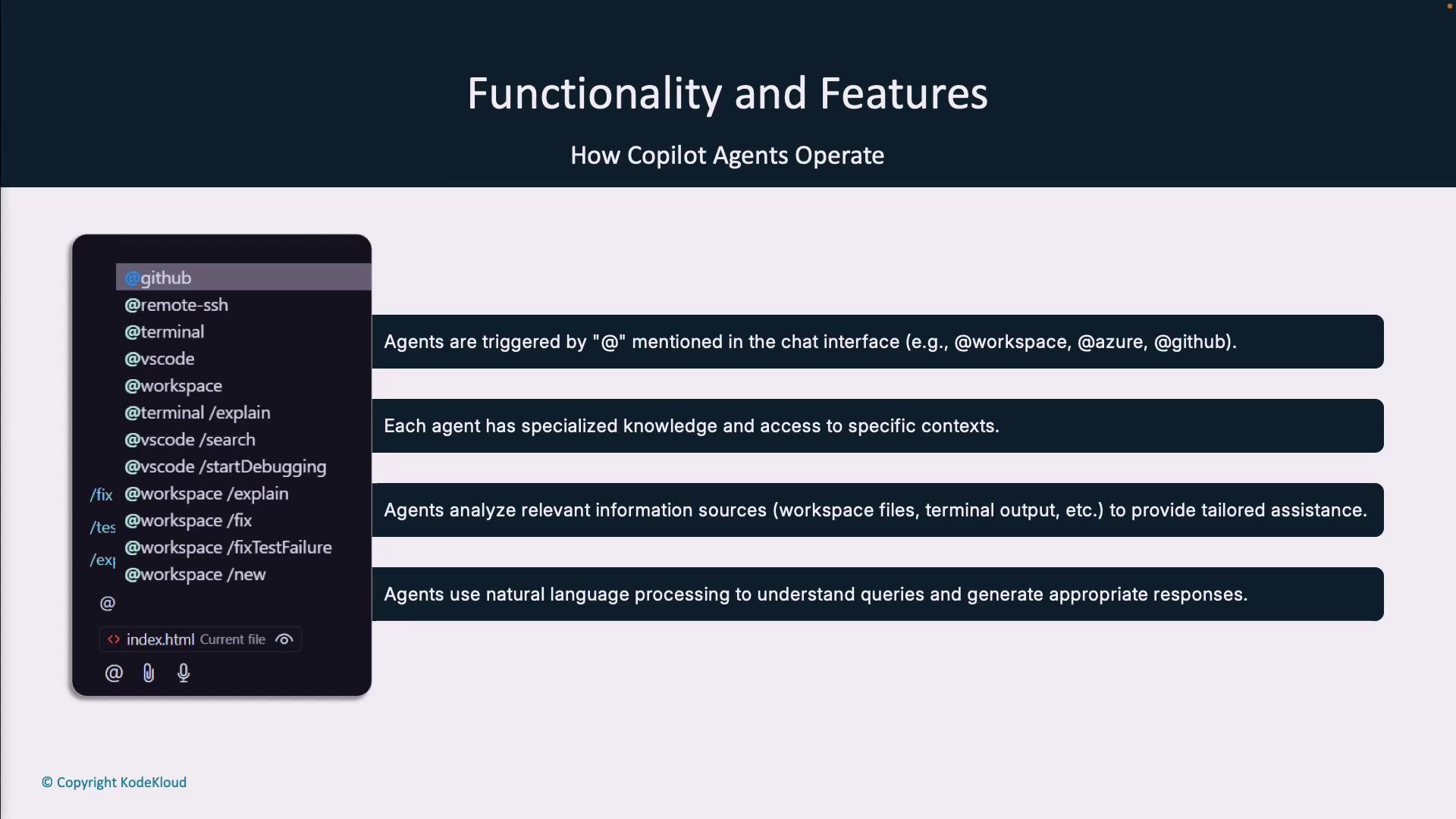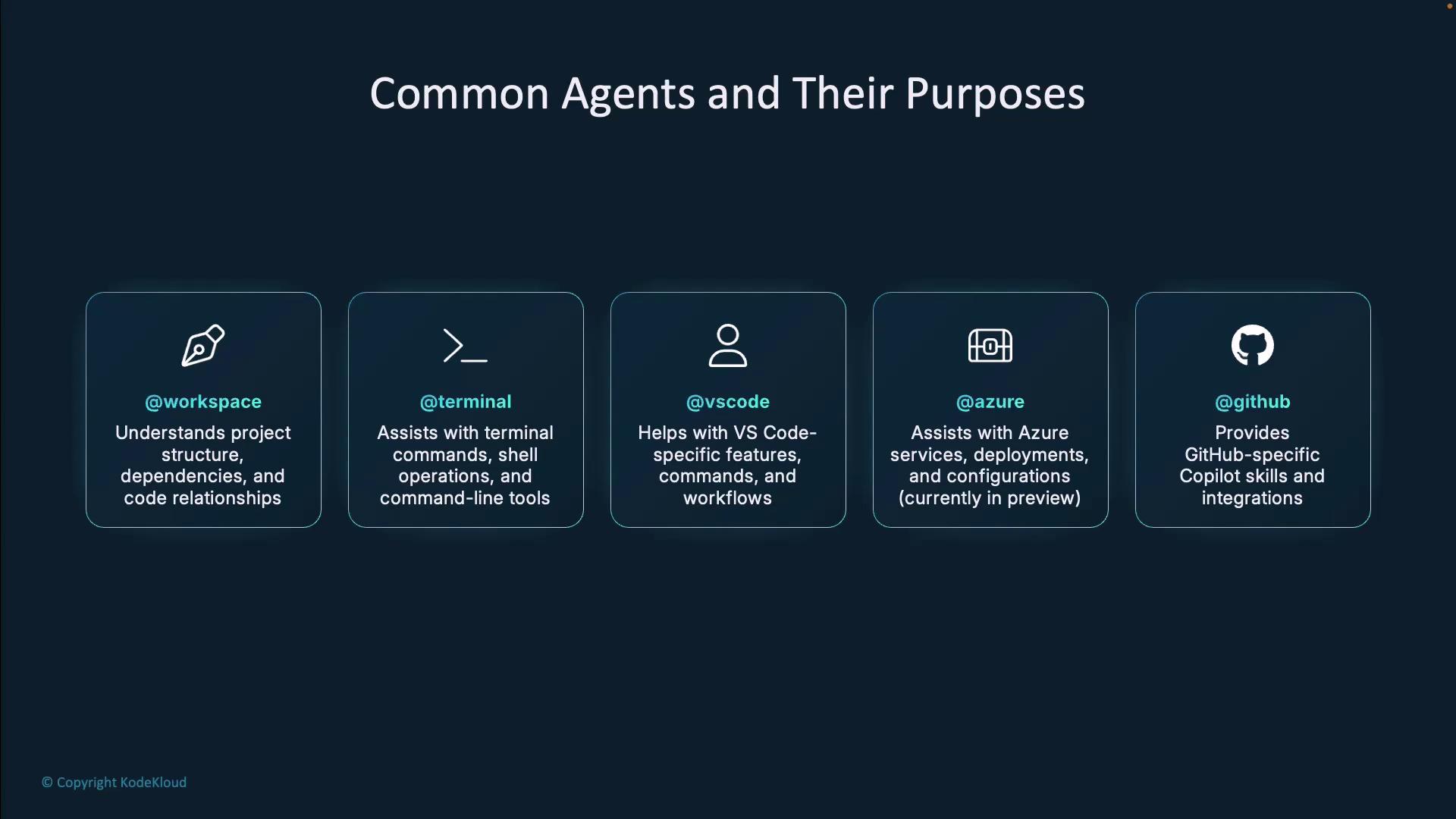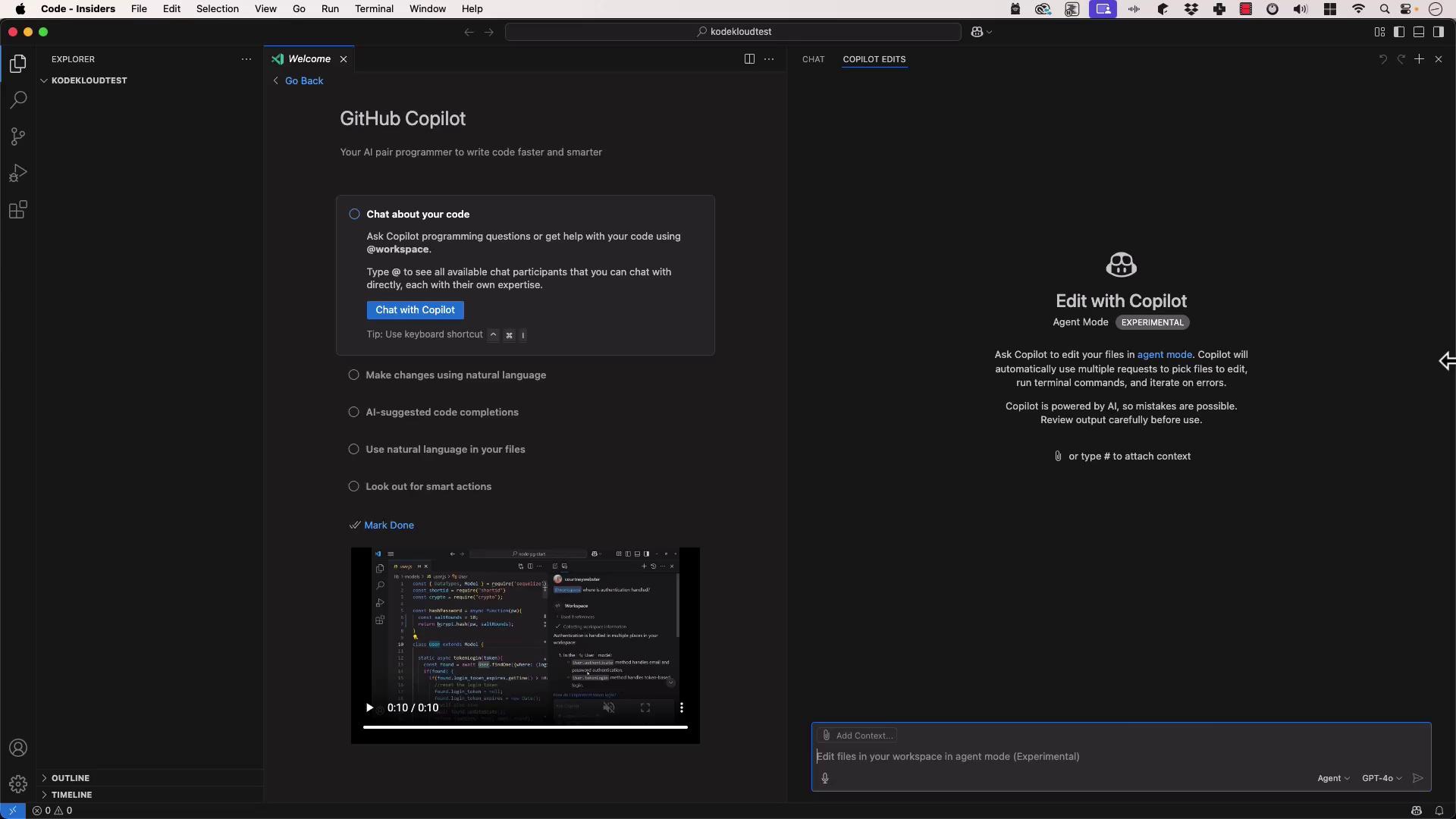GitHub Copilot Certification
Advanced Features
GitHub Copilot Agents
In this guide, we explore GitHub Copilot Agents and demonstrate how to control context in your prompts for more precise AI assistance.
What Are Copilot Agents?
GitHub Copilot Agents are domain-specific assistants you can summon in the chat interface by typing @ followed by their names. Each agent is optimized to access relevant contexts—such as your workspace files, terminal history, or editor settings—to deliver tailored suggestions and code snippets. These agents use advanced natural language processing (NLP) to understand your requests and generate contextually accurate responses.

Note
Each agent has unique training data and access scopes—choose the right one for your task to get the best results.
Accessing and Invoking Agents
To view all available agents, type @ in the Copilot chat prompt. A dropdown menu will list every agent you can interact with. Simply select an agent by typing @agent-name. For example:
@workspace
For optimal responses, frame your query according to the agent’s expertise.

Common Agents and Their Domains
| Agent | Domain | Example Use Case |
|---|---|---|
| @workspace | Project structure, dependencies, code relationships | Explain function calls across multiple modules |
| @terminal | Shell commands, environment setup, CLI tooling | Install dependencies or troubleshoot command errors |
| @vscode | VS Code settings, extensions, editor features | Enable Copilot Chat experimental features |
| @azure (preview) | Azure services, deployments, cloud configurations | Scaffold Azure Functions or ARM templates |
| @github | GitHub workflows, actions, repository integrations | Create CI/CD pipelines or manage pull request templates |

Agents in Action: Mention-Based Workflow
Below is a step-by-step example of how to use mention-based agents in Visual Studio Code:
Open Copilot Chat (
Ctrl+Shift+P→ Copilot: Open Chat)Type
@workspaceand ask a question:@workspace Explain how this traffic simulation application works.The agent will scan your entire project and highlight relevant functions. For instance:
def draw_traffic_light(surface, direction, state): """ Draws a circular traffic light for a given direction at a fixed offset from the intersection. """ positions = { 'north': (CENTER_X, STOP_LINE['north'] - LIGHT_OFFSET), 'south': (CENTER_X, STOP_LINE['south'] + LIGHT_OFFSET), 'east': (STOP_LINE['east'] - LIGHT_OFFSET, CENTER_Y), 'west': (STOP_LINE['west'] + LIGHT_OFFSET, CENTER_Y) } pos = positions.get(direction) color = LIGHT_COLORS[state] pygame.draw.circle(surface, color, pos, LIGHT_RADIUS)Switch to the Terminal agent to install and run the app:
pip3 install pygame python3 -m venv testenv source testenv/bin/activate pip install pygame python main2.pyIf you encounter an indentation error:
(venv) jeremy@MACSTUDIO code % python main2.py Traceback (most recent call last): File "main2.py", line 220, in <module> main() File "main2.py", line 216, in main run_simulation() IndentationError: unindent does not match any outer indentation levelCorrect the indentation and rerun to launch the Pygame traffic light simulator.
For editor-specific queries, use the VS Code agent:
@vscode How do I enable Copilot Chat experimental features?It will direct you to Settings > Editor > Copilot.
Generate tests across your codebase with Workspace:
@workspace fix testsThis produces comprehensive unit tests rather than file-scoped ones.
Experimental Agent Mode
GitHub Copilot’s experimental Agent Mode lets Copilot autonomously suggest code, edit files, and run terminal commands. This mode can significantly accelerate repetitive tasks.

To enable Agent Mode:
Click the Agent Mode toggle in the lower-right corner of VS Code.
Request a new project scaffold:
Create a Python API application.The agent will generate a virtual environment, install Flask, and produce
app.py:from flask import Flask app = Flask(__name__) @app.route('/') def hello_world(): return 'Hello, World!' if __name__ == '__main__': app.run(debug=True)And run:
python3 -m venv venv source venv/bin/activate && pip install Flask source venv/bin/activate && python app.py* Running on http://127.0.0.1:5000/ (Press CTRL+C to quit) * Restarting with stat * Debugger is active! * Debugger PIN: 371-990-415 127.0.0.1 - - [06/Mar/2025 14:45:21] "GET /" 200 -
Warning
Agent Mode is experimental. Review all changes before committing to avoid unintended edits.
From here, you can ask the agent to add a database layer:
Add an in-memory database with fields ID, name, and email.
The agent will update your Flask app and execute the necessary commands automatically.
Summary
- Mention-based Copilot Agents (
@workspace,@terminal,@vscode, etc.) scan specific contexts to deliver targeted assistance. - Experimental Agent Mode enables Copilot to autonomously generate code, run commands, and modify files.
Leverage GitHub Copilot Agents to streamline your development workflow and boost productivity.
Links and References
Watch Video
Watch video content